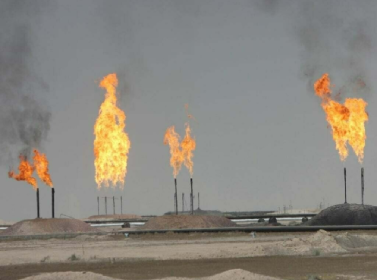NEW YORK: US natural gas futures slid about 2% on Tuesday on forecasts for mild weather and less heating demand over the next two weeks than previously expected.
Front-month gas futures for December delivery on the New York Mercantile Exchange fell 4.3 cents, or 1.5%, to $2.930 per million British thermal units (mmBtu) at 7:53 a.m. EST (1253 GMT).
Analysts have said that mild weather so far this autumn should allow utilities to keep injecting more gas than usual into storage for the weeks ended Nov. 15 and possibly the week ending Nov. 22.
If correct, the week ended Nov. 15 would be the first time inventories rose by more than usual for five weeks in a row since October 2022.
There was currently about 7% more gas in storage than normal for this time of year.
Looking ahead, the market is showing signs of giving up on thoughts that extreme cold could cause prices to spike this winter with futures for March 2025 trading at a record low premium over April 2025 of just 2 cents per mmBtu.
March is the last month of the winter storage withdrawal season and April is the first month of the summer storage injection season. Since gas is primarily a winter heating fuel, traders have said summer prices should not trade above winter.
If the March-April 2025 contract trades in contango, with the April contract priced higher than March, it could be the earliest switch from backwardation, with the March contract priced higher than April, in recent years.
The March-April 2024 spread did not trade in contango until Dec. 13. That compares with Jan. 25 for the March-April 2023 spread, never for the March-April 2022 spread and Dec. 8 for the March-April 2021 spread, according to seasonality data from LSEG.
The industry calls the March-April spread the “widow maker” because rapid price moves on changing weather forecasts have forced some speculators out of business, including the Amaranth hedge fund, which lost more than $6 billion in 2006.
Financial firm LSEG said average gas output in the Lower 48 US states eased to 100.6 billion cubic feet per day (bcfd) so far in November, down from 101.3 bcfd in October. That compares with a record 105.3 bcfd in December 2023.
That puts annual output on track to decline in 2024 for the first time since the COVID-19 pandemic cut demand for the fuel in 2020.
Many producers reduced drilling activities so far this year after average spot monthly prices at the US Henry Hub benchmark in Louisiana fell to a 32-year low for the month of March, and have remained soft since then.





